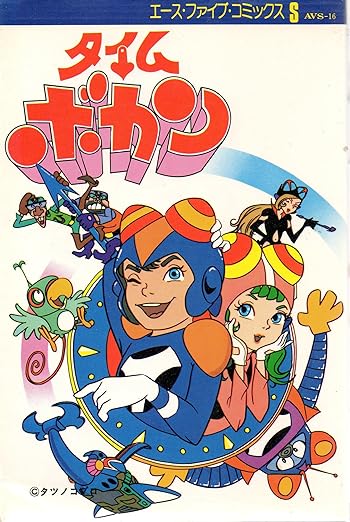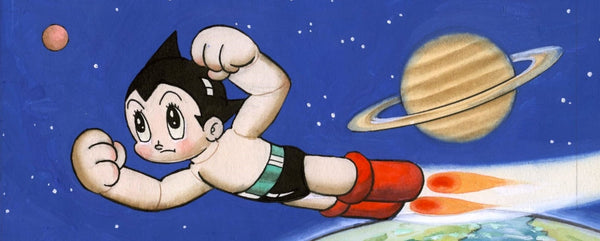Tatsuo Yoshida
Biography | Tatsuo Yoshida
Biography | Tatsuo Yoshida
Couldn't load pickup availability
Tatsuo Yoshida (1932–1977)
“To give dreams to children of the whole world!”
Tatsuo Yoshida and his brothers were orphaned shortly after WW2. In order to survive, he taught himself to draw, earning a living by illustrating for newspapers and magazines, as well as for kamishibai.
He moved to Tokyo with the ambition of becoming a professional illustrator, and in the 1950s he published illustrations in the Kyoto Shinbun and the Miyako Shinbun.
He first sought to establish himself as an author of illustrated stories (emonogatari), but the rapid decline of that genre led him to turn toward manga.
His professional manga debut came in 1954 with Tekwan Rikiya, published in Bōken-ō and written by the great Ikki Kajiwara.
From 1955 onward, he formed a productive tandem with Kajiwara, collaborating on many works that laid the foundations of his career and helped shape the postwar manga scene.
However, the decisive turning point in his career came through Yoshida’s connection with the entourage of Osamu Tezuka. Hiroshi Sasagawa, Tezuka's first full-time exclusive assistant, was a close friend of Yoshida, and he persuaded Yoshida to venture into animation.
In November 1962, when Tezuka and Mushi Production announced Astro Boy along with its pilot episode, the entire manga and animation industry gathered to watch it. Yoshida took a deep interest in anime production, marking the beginning of the “anime chapter” of Tatsunoko.
That same year, Yoshida and his two younger brothers, Kenji Yoshida and Ippei Kuri, founded Tatsunoko Production (later “Tatsunoko Pro”), the animation studio of which Tatsuo became the first president. They distinguished themselves by systematically refusing to adapt pre-existing material, choosing instead to focus entirely on original concepts.
In 1964, Yoshida published Space Ace in Shōnen Book, which he later adapted into an animated series within his own studio. The series was clearly inspired by Astro Boy, yet Yoshida produced Space Ace in a distinctly American style, with designs influenced by comic books, venturing into areas other studios avoided. In 1967, Mach GoGoGo confirmed this formula, achieving great success and solidifying his artistic direction.
Beyond youth-oriented animation, Yoshida also distinguished himself through darker, more historical narratives.
One of these was published in February 1967: Kaiten, the Human Torpedo (Weekly Shōnen Sunday #50), a manga depicting the human torpedoes used by the Imperial Japanese Navy at the end of WW2.
This work is considered a masterpiece among the “war manga” of the 1960s, a period when memories of the conflict still remained vivid in Japanese society.
Yoshida’s work stood out for its animation-inspired approach, shaped by American design sensibilities, and for its serious tone, in contrast with the lighter productions of the time.
His line was fluid and dynamic, while his page layout was remarkably modern.
Many authors would have introduced caricatural or comedic elements to soften the harsh subject, but Yoshida chose to maintain a realistic style with hardly any humorous relief.
He portrayed the sacrifice of young soldiers aboard suicidal weapons with the clear aim of conveying the memory of a broken generation. Yoshida portrayed the human side of war with clarity and empathy. His careful drawing style adds to the tension and shows how personally he felt the story. This side of his work contrasts with the cheerful spirit of his TV series, revealing the full range of his storytelling talent.
The 1970s marked the height of Yoshida’s career, as he created a string of series that would become milestones of Japanese animation: Minashigo Hatch, The Genie Hakkushon, Gatchaman, and Yattāman.
In 1971, Minashigo Hatch brought him the 17th Shōgakukan Manga Award, officially recognizing his influence on Japan’s popular culture. His personal motto, later adopted by Tatsunoko itself, summed up his vision:
“To give dreams to children all over the world.”
Yoshida passed away on 5 September 1977 at only 45 years old, leaving behind a vast legacy that would permanently influence the Japanese animation industry.
His sudden death shocked the entire manga world.
His work remains a unique testimony to the richness of Japan’s drawn and animated media.
Share












